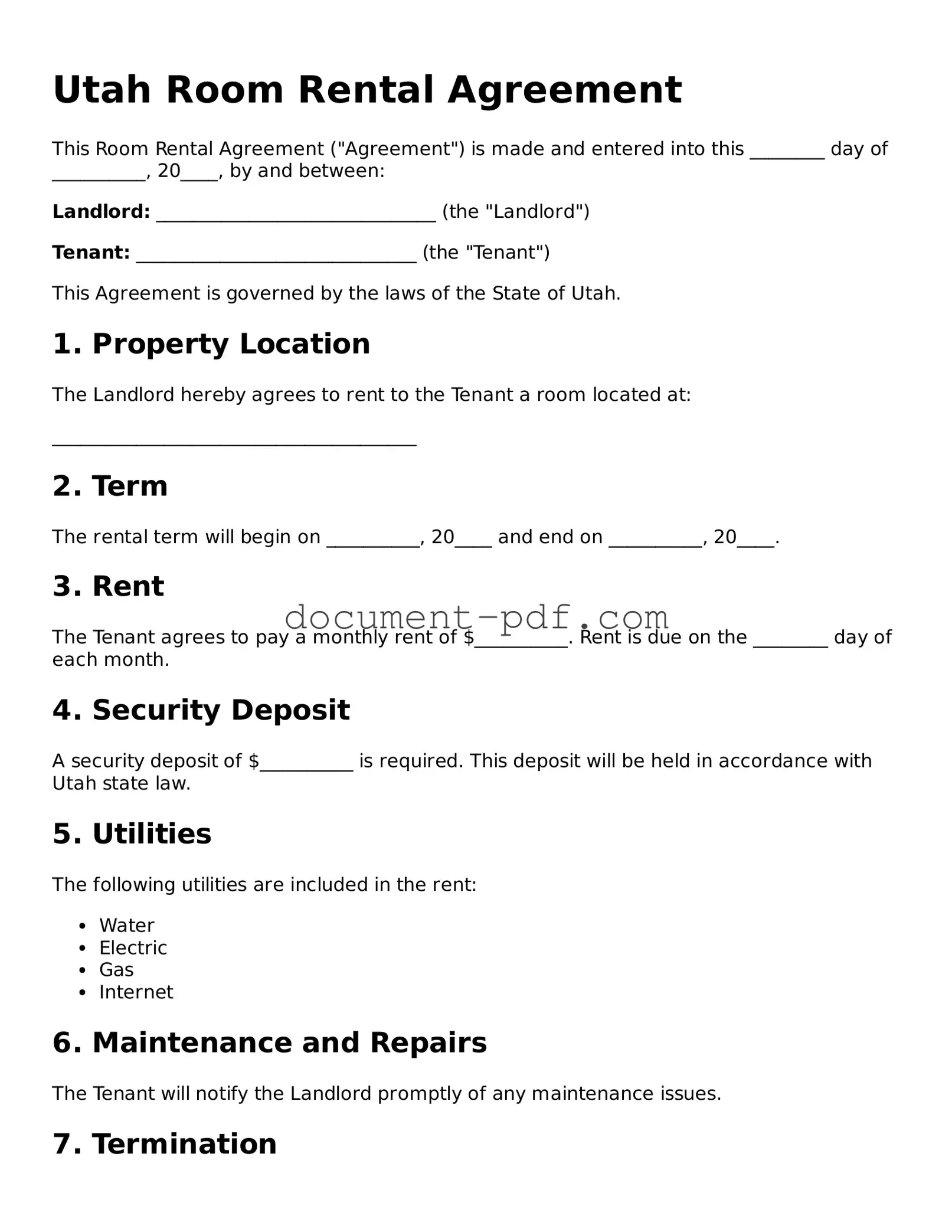Utah Room Rental Agreement
This Room Rental Agreement ("Agreement") is made and entered into this ________ day of __________, 20____, by and between:
Landlord: ______________________________ (the "Landlord")
Tenant: ______________________________ (the "Tenant")
This Agreement is governed by the laws of the State of Utah.
1. Property Location
The Landlord hereby agrees to rent to the Tenant a room located at:
_______________________________________
2. Term
The rental term will begin on __________, 20____ and end on __________, 20____.
3. Rent
The Tenant agrees to pay a monthly rent of $__________. Rent is due on the ________ day of each month.
4. Security Deposit
A security deposit of $__________ is required. This deposit will be held in accordance with Utah state law.
5. Utilities
The following utilities are included in the rent:
- Water
- Electric
- Gas
- Internet
6. Maintenance and Repairs
The Tenant will notify the Landlord promptly of any maintenance issues.
7. Termination
Either party may terminate this Agreement by giving the other party a written notice at least ________ days in advance.
8. Additional Terms
_____________________________________________
_____________________________________________
9. Signatures
The parties hereby agree to the terms outlined above.
______________________________
Landlord Signature
Date: ___________
______________________________
Tenant Signature
Date: ___________
